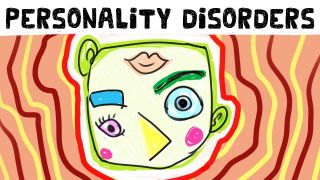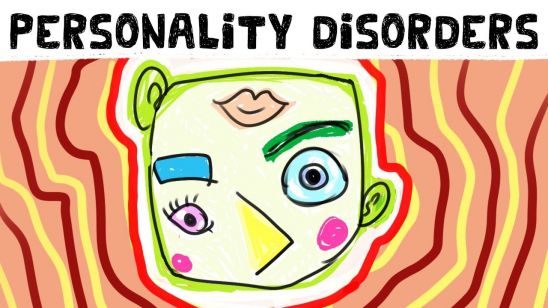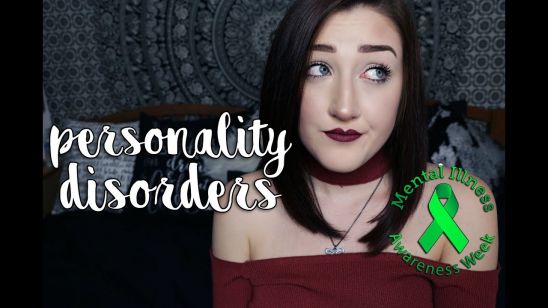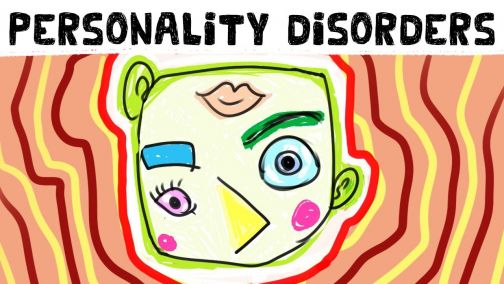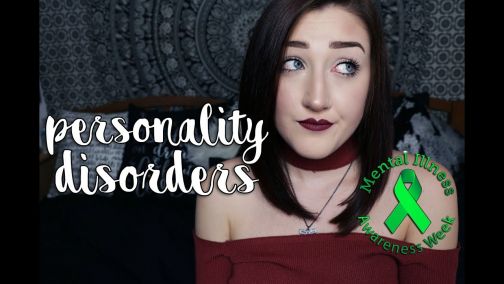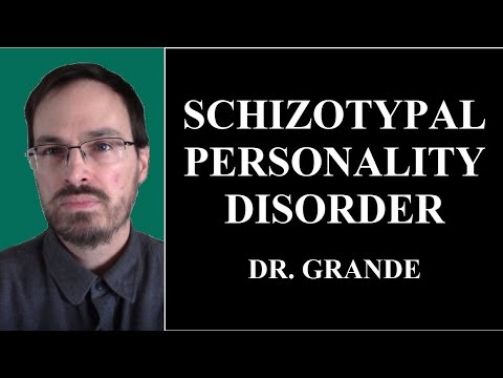Schizotypal Personality Disorder
Also known as STPD
What is it?
Personality disorders are deeply ingrained patterns of behavior that violate social norms and cause problems in interpersonal relationships. They are broken into three categories — Cluster A, B and C.
Personality disorders are previously known as axis two disorders — a group of conditions that impact a person’s function in relation to others. They are ego-syntonic, meaning a person with a personality disorder often doesn’t believe they have a problem. The disorder is consistent with their world view, perception of others and perception of themselves. They usually begin during a person's teenage years or early adulthood, and in some cases, become less obvious in middle age. It is common for people with one personality disorder to have symptoms of another.
Schizotypal personality disorder, also called STPD, is a Cluster A disorder. Cluster As are characterized by odd or eccentric ways of thinking. People with STPD hold unconventional beliefs, mistrust others, and often have difficulty maintaining relationships. They struggle to understand social norms, including how to behave around other people or form intimate relationships. They may say strange things and exhibit strange speech patterns, including mentions of delusions, bizarre fantasies or clairvoyance. Their struggle to maintain relationships often leads to issues with social anxiety and paranoia.
STPD often occurs alongside other mental health conditions, including major depressive disorder and substance use disorders. It’s estimated that around 3.9% of the U.S. population has STPD.
What are the symptoms?
People with STPD are typically considered loners. They struggle to relate to people, and have anxiety about trying out of fear of seeming “different.” They often believe in strange things, such as paranormal powers, superstitious beliefs, the ability to affect other people’s behaviors, and the existence of magic (also sometimes strong beliefs in crystals, energy etc). They may dress in peculiar or unkempt ways or have odd speech patterns that seem disjointed, abstract or exaggerated.
Additional symptoms include:
- Feeling uncomfortable in social settings
- Maintaining strange beliefs or fantasies
- Acting or dressing unusually
- Having strange speech patterns
- Having difficulty maintaining or making friends
- Being suspicious or paranoid
- Displaying feelings or thoughts in unusual or inappropriate ways
STPD can be confused with schizophrenia. While they share similar symptoms, including brief psychotic episodes, STPD psychosis is far less frequent and severe. People with STPD can also be made aware of their distorted realities, which is uncommon in schizophrenia. It usually co-occurs with major depressive disorder, dysthmia and generalized social phobia. It can sometimes be comorbid with OCD. The presence of STPD often makes treatment for other conditions more difficult.
What are some common warning signs?
STPD is characterized by social ineptness, strange speech patterns, paranoia and magical thinking. Because of this, a loved one with STPD might display noticeable symptoms at home, at work or in social settings. If you think a loved one may have STPD, ask yourself the following questions:
- Are they on edge around others or seem suspicious of people they don’t know well?
- Do they stare at strangers, or try and get out of public spaces quickly?
- Do they think coworkers or peers are “out to get them”?
- Do they express constant worries about their safety, their romantic partners, the people they work with or family members?
- Do they believe in paranormal activity, magic, mind reading, predicting the future, controlling other people’s behaviors, or other fanciful things?
- Do they use odd phrases or words when speaking?
- Do they have odd mannerisms, such as struggling to make eye contact?
None of these behaviors confirm a STPD diagnosis, but they do hint at one. If you feel comfortable doing so, talk to your loved one about this behavior and why you’re concerned. Keep in mind that symptoms aren’t always obvious. People battling chronic mental health conditions often learn to hide their pain from others. It’s possible to appear outwardly fine, while facing mental difficulties in secrecy.
What causes STPD?
The exact causes of STPD are unknown. Doctors believe a range of factors play a role in its development, including being genetically predisposed (i.e. other family members struggle with STPD, schizophrenia and/or other delusional disorders) or engaging in drug use that triggers the condition.
Rates of schizotypal personality disorder are much higher in relatives of individuals with schizophrenia than in the relatives of people with other mental illnesses or in people without mentally ill relatives. There is some evidence that parenting styles, early separation or neglect and trauma can lead to schizotypal traits.
How is it treated?
The primary treatment method for all personality disorders, STPD included, is psychotherapy (aka talk therapy). Behavioral modification or Cognitive Behavioral Therapy (CBT) are the most recommended.
Medications are not commonly used to treat personality disorders. However, they may be used to address severe cases or symptoms that stem from co-occurring conditions. Common medications include anti-depressants such as SSRIs or SNRIs, anti-anxiety medications (aka Benzodiazepines), and antipsychotics.
Treatment for STPD can be successful, however, it is uncommon for people to seek help for the condition. Instead, they seek out remedies for their depressive or psychotic symptoms.
It’s important to remember that treatment plans are personalized. If you’re seeking help, make sure you work one-on-one with a doctor to create a plan that fits your needs. Just because a medication or therapy helps someone else recover, doesn’t mean it’ll be the right solution for you. Don’t ever feel guilty about asking for help, taking meds or going to therapy. Addressing your mental health is a productive and courageous thing to do.
How can I help a loved one with STPD?
Caring for someone with STPD isn’t always easy. They may seem distant and uninterested in strengthening your relationship. It’s important to remember that their feelings and behaviors are not a reflection of your self-worth.
It can also be hard to know how to support them. Do they want to talk about their behavior? Will they push you away if you try to help? There are no easy answers to these questions. Every person handles their mental health differently. That said, we all want to feel loved and supported. Showing someone that you’re invested in their wellbeing can make a difference.
Here are some ways to do so:
- Educate yourself: Read up on symptoms, treatment options, and healthy living recommendations. Try and understand what your loved one is going through so you are better equipped to talk to them about it. This will also make you a valuable resource when it comes time to find treatment.
- Give positive reinforcements: Let them know when they’ve accomplished an important task, hit a life milestone, or handled a social situation well. Many people with STPD doubt their abilities to thrive, and being praised can boost their confidence.
- Advocate treatment: Asking for help can be hard. Societal stigma often keeps people from opening up to others about their symptoms. Support your loved one by helping them research different treatment methods, or doctors in their area. If they’d like, go to a few sessions with them. Remind them that there’s nothing weird about getting help, and that you’re proud of them for following through. Remember that people with STPD are often reluctant to seek help.
- Be patient: Don’t take it personally if they lash out at you, don’t answer text messages or socialize less. They are battling something that’s very hard to overcome. Their distance has nothing to do with who you are as a person. Keep showing up for them even when it feels like it’s not helping. The act alone lets them know that they have people in their life who care.
What other resources are out there?
Want to learn more, find a doctor, join a support group or speak to a counselor? The below resources might be able to help:
- New England Personality Disorder Center
- Emotions Matter
- Crisis Text Line
- BetterHelp
- Psychology Today Directory
- American Psychiatric Association
- Medicaid Eligibility Information
- Open Path Collective
- Resources for POC, LGBTQ+ and disabled individuals
- Anxiety and Depression Association of America
- National Network of Depression Centers
- Medicine Assistance Tool
- NeedyMeds
- Erika's Lighthouse
- Anxiety Network
- Anxiety Central Forums
- National Social Anxiety Disorder Center
- International Society for the Study of Trauma & Dissociation
Support our work
We’re on a mission to change how the world perceives mental health.

